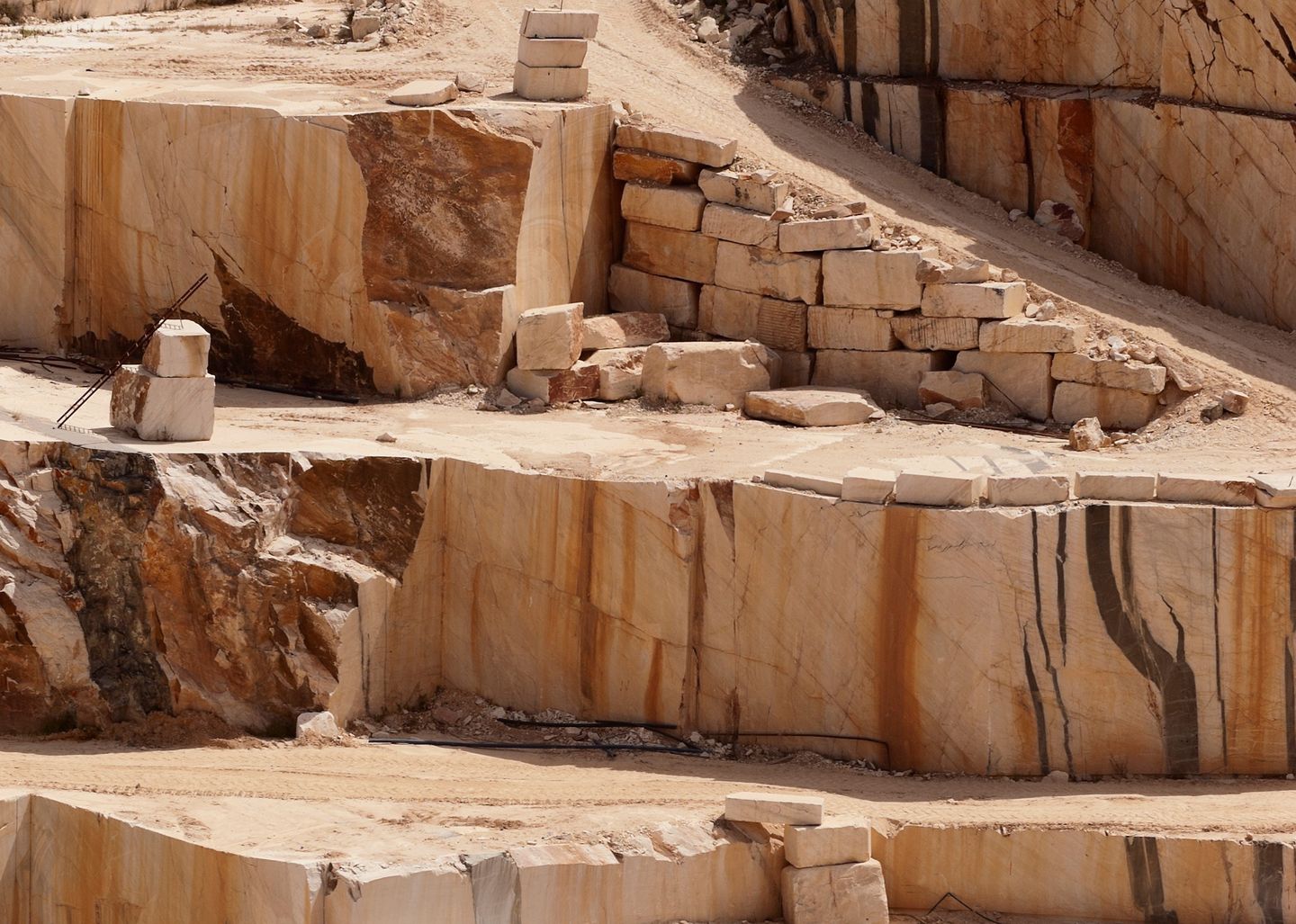
Approved by mother nature.
Good for the environment, for millions of years.

Stone as a building material has a long history that dates back to the earliest human civilizations. Thousands of years ago, people already recognized the advantages of using stone for constructing dwellings, fortifications, and other structures. As a building material, stone embodies durability, stability, and individuality. Its diverse applications and wide variety make stone a timeless and sustainable element in construction as well as in artisanal crafts. While the production of materials like glass, concrete, or steel requires a significant amount of energy, natural stone is readily available in nature. Therefore, it possesses an excellent ecological balance as a building material and makes a substantial contribution to reducing carbon dioxide emissions. Unlike most other building materials, the raw product for natural stone is already present from the outset.
Extraction of natural stone.
Natural stone is a unique building material that requires very little energy for its extraction and processing. This makes it an ecologically advantageous material. Additionally, natural stone is highly durable and can be reused or crushed into gravel and aggregate at the end of a building's lifespan. Compared to other building materials, the proportion of usable material obtained from the natural resource is very high, and natural stone reserves in Germany and worldwide are practically endless. Our entire planet is made of natural stone, mostly like granite, formed by the solidification of magma deep within the Earth. Modern extraction techniques prevent environmental damage such as the formation of fine dust. The residues generated during extraction and processing can be directly used to fill mined parts of the quarry or applied in garden and landscaping, masonry, water engineering, or gravel production, for instance. Quarries become unique habitats with high biodiversity during the extraction period. Rare plant and animal species find a habitat here that arises only through the operation of the quarry and is scarcely found in our cultural landscape otherwise.


Usage
Old castles and palaces, ancient courtyards, and old apartment buildings are visible to all. They show how enduring stone can be. Buildings made from seemingly cheaper building materials often last only a few decades, whereas natural stone architecture is nearly immortal. A well-planned natural stone facade still functions flawlessly even after 100 years. Because damages to the building structure are rare, the operation throughout its entire useful life is not only more environmentally friendly but also more cost-effective compared to projects using industrially manufactured materials.



Re- & Upcycling
Natural stone is a sustainable building material that produces no waste. The leftover pieces from cutting or crushing the stone slabs and blocks are not thrown away. They are used as gravel in road construction, as gravel to reinforce paths or as an additive for other industries - for example in the production of bricks or other building materials. In new construction and renovation projects, old natural stone elements can often be recycled and reused after the demolition of an existing building. In the past, it was common practice for natural stone from old castles and churches to be reused in the construction of new buildings. Nothing is lost in the entire process of natural stone extraction, processing and recycling. This demonstrates the special quality of natural stone as a building material for thousands of years.

For more information, we recommend the website of the German Natural Stone Association and the Zukunft Naturstein initiative.
Would you like to be regularly informed? We'll gladly send you our news via email!